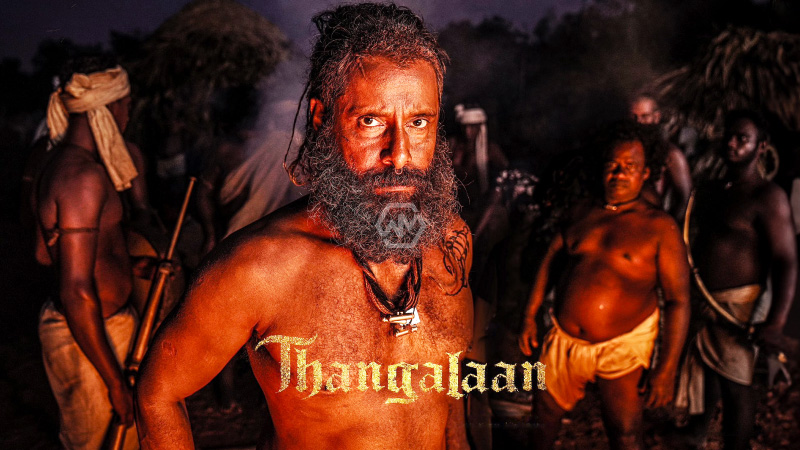- Thangalaan merges history and mysticism, exploring the exploitation of an indigenous community in the 1850s.
- The film features stellar performances by Vikram, Parvathy Thiruvothu, and Malavika Mohanan.
- Director Pa Ranjith uses live sound recording and exceptional cinematography to elevate the narrative.
Thangalaan, directed by Pa Ranjith, is a groundbreaking film that masterfully blends the genre of magic realism with a gripping historical narrative.
Set in the 1850s, it tells the story of an indigenous tribe in Tamil Nadu oppressed by both the British colonizers and the caste system. Vikram’s portrayal of the titular character is compelling, as he leads his tribe through the dual hardships of exploitation and mystic quests.
Thangalaan: A Cinematic Fusion of History, Myth, and Struggle
The film stands out for its technical brilliance, notably the decision to use live sound recording, which adds a raw, authentic feel to the scenes. Cinematographer Kishor’s breathtaking visuals seamlessly transition between reality and the supernatural, while GV Prakash’s powerful score underscores the tension and drama, making Thangalaan a cinematic experience that lingers long after the credits roll.
The film’s narrative is not only a historical recount but also a critique of the entrenched caste hierarchy, making it overtly political in its messaging. Ranjith’s direction shines through in scenes that balance powerful symbolism with raw emotion, particularly in moments where the mystic elements intertwine with the harsh realities of the time. The presence of Malavika Mohanan as Arathi, a mythical being, adds layers to the narrative, making the story both engaging and thought-provoking.
Technical aspects of Thangalaan significantly contribute to its impact. The choice to use live sound instead of dubbing lends an organic, immersive quality to the film, capturing the harshness of the landscape and the emotions of the characters. Kishor’s cinematography enhances this effect, with sweeping shots of arid lands and smooth transitions between the tangible and the mystical, further drawing the audience into Ranjith’s world.
GV Prakash’s score is another standout, complementing the film’s intense atmosphere with a powerful soundtrack. The music, particularly during key moments of conflict and revelation, amplifies the narrative’s emotional weight. While the visual effects could have been more refined, they do not detract from the film’s overall impact, making Thangalaan a must-watch for its bold storytelling and technical prowess.
Thangalaan is a cinematic milestone that not only entertains but also challenges viewers to reflect on the historical and social issues it presents, making it a film that resonates long after viewing.
“The way they put on the garment and the unfiltered conversation around it add much flavour to the rustic nature of the film.”



